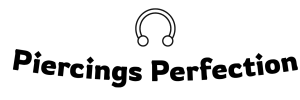Introduction to Belly Button Piercing
Belly button piercing, also known as navel piercing, is a popular form of body modification that involves piercing the skin around the navel. It’s a fashionable choice that can be personalized with various jewelry styles. This comprehensive guide will walk you through all aspects of belly button piercings, from the initial decision to aftercare and troubleshooting.

Considering Pregnancy: Pregnant Belly Button Piercing
Pregnant belly button piercing addresses concerns and precautions for those who are or might become pregnant. It discusses how pregnancy can affect an existing piercing and what to consider if you’re planning to get a piercing while pregnant.
Understanding Pain: Belly Button Piercing Pain Scale 1-10
Belly button piercing pain scale 1-10 aims to provide an idea of what to expect in terms of pain. Pain tolerance varies from person to person, but this section will give a general range based on common experiences.
Aftercare Essentials: Belly Button Piercing Aftercare
Proper aftercare is crucial for a healthy and well-healed piercing. “Belly button piercing aftercare” will guide you through cleaning routines, what to avoid during healing, and how to recognize and address common issues.
The Floating Variation: Floating Belly Button Piercing
Floating belly button piercing is a variation that involves a longer barbell to accommodate various body types, especially if the traditional piercing style doesn’t suit the anatomy. This section will explain what makes it different and whom it benefits.
Speeding Up Healing: How to Heal Your Belly Button Piercing Faster
Everyone wants a quick healing process. “How to heal your belly button piercing faster” offers tips and tricks to promote efficient healing while minimizing complications, focusing on care routines and lifestyle adjustments.
Identifying Infection: What Does an Infected Belly Button Piercing Look Like?
Knowing how to recognize an infection is vital. “What does an infected belly button piercing look like?” will describe signs of infection, including redness, swelling, pain, and discharge, and what steps to take if you suspect an infection.
Troubleshooting Redness: My Belly Button Piercing is Red Around the Top Hole
If you’re concerned because “my belly button piercing is red around the top hole,” this section will help. It discusses potential causes of redness and irritation and how to differentiate between normal healing processes and signs of a problem.
Conclusion
Belly button piercings can be a beautiful, personal expression of style. Understanding the process, from pain to aftercare, and recognizing how to handle potential issues is key to enjoying your piercing. With proper care and attention, you can ensure that your belly button piercing is a satisfying and safe addition to your body art.
